"Virtuous" Deoksugung Palace
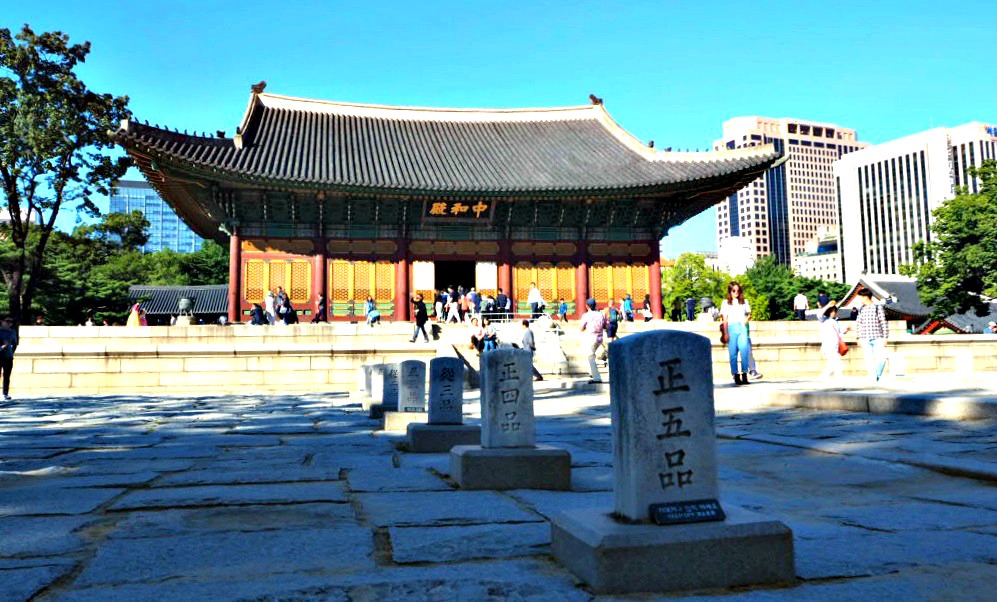 Deokhongjeon Hall and its spacious front yard
Deokhongjeon Hall and its spacious front yardIntroduction
Deoksugung Palace is one of the four best palaces in Seoul, South Korea. It is located near the City Hall and has a long history of royal residence.
In addition to its grand scale, there are many interesting things to see in Deoksugung Palace, such as the Seokjojeon Hall, which is one of the main halls of the palace; the King Gojong Memorial Hall and especially beautiful Japanese-style buildings; the walls and gates surrounding the palace; and various gardens with different kinds of trees.
The history, architecture, and beauty of Deoksugung Palace make it a must-visit place for anyone interested in Korean culture!
In addition to its historical importance, there are also many events that take place at Deoksugung Palace throughout the year, including traditional performances and festivals that show off the vibrant culture of South Korea.
There are also exhibitions featuring artifacts from the palace's past and even art galleries showcasing modern artwork. Visiting Deoksugung Palace is a great way to experience both history and culture at once!
deoksugung palace
Deoksugung Palace is one of the most beautiful palace sites in Seoul, Soth Korea. It is sitting amidst the busy Seoul thoroughfare, Western-style old buildings, and located with very accessible public transports.
It was a refreshing and beautiful early summertime when we visited this palace. I know I've been there before and for quite some time have never revisited it.
Personally, I like Gyeongbokgung Palace, which is located less than a kilometer from Deoksugung Palace. Probably because Gyeongbokgung is more expansive and splendid?
Historical Background
Uniquely speaking, Deoksugung Palace is considered the only palace in Korea that sits among the Western-style buildings in the busy surrounding of Seoul.
Historically, Deoksugung Palace originally belonged to Grand Prince Wolsan, the older brother of King Seongjong (1469-1494) of the Joseon Dynasty period.
Deoksugung Palace area became a proper palace only when Gwanghaegun (1575-1641) ascended to the throne and named it Gyeongungung Palace in 1611.
During those decades, Deoksugung was used alternately as the temporary royal residence and an official palace by royals. It was only in 1907 that it gained its official name 'deoksugung' - meaning "the palace of virtuous longevity."
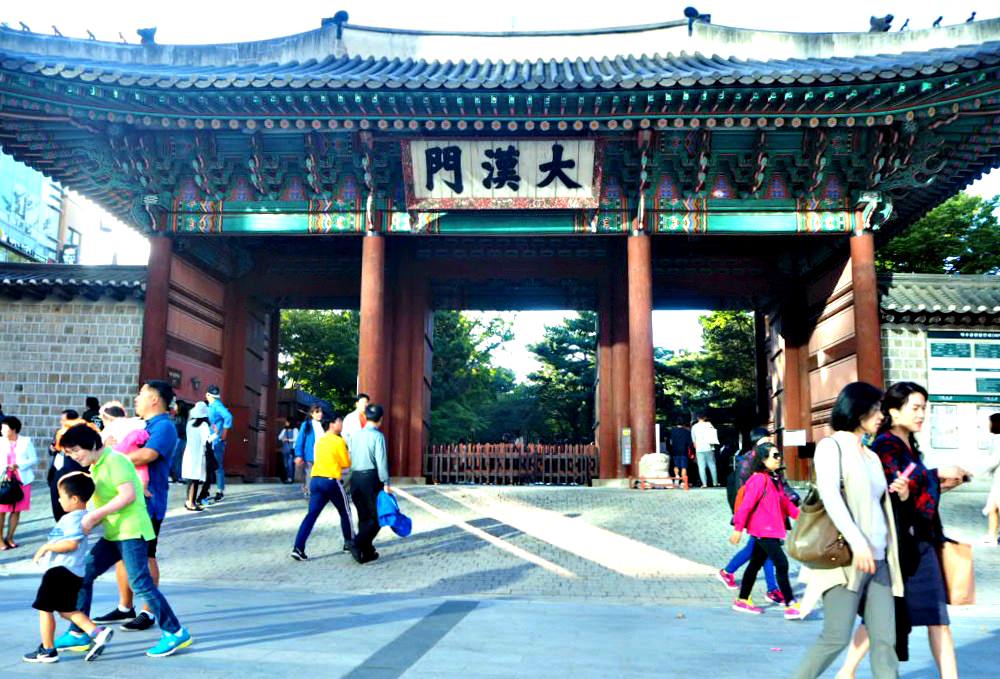 Entrance gate of Deoksu Palace
Entrance gate of Deoksu PalaceAmong the Famous Five of Seoul's palaces, Deoksugung is the last one to be built and became the seat of power when the Japanese destroyed Gyeongbokgung in 1592. King Gojong also used this palace after he fled when his wife got assassinated in 1895.
Compared to other palaces in Seoul, Deoksugung is not so splendid but a very historical and crucial political place of the nation's development. You will notice that much taller buildings, such as business complex, the new City Hall, and hotels, among other structures, surround this ancient national treasure.
Inside the palace, you can enjoy art pieces at the National Museum for Contemporary Art (W3000), most of which are masterpieces by Korean artists.
The (concrete) steps of this museum is a favorite photo-spot among graduating students for this album. You can see them usually in June who are all dressed up and excited about everything--parties and celebrations.
Yup, I have seen the exhibition of famous Korean painters and artists. By looking at their pieces (masterpieces) as if you can feel and get to know the artists as they painted their own experiences and feelings through their arts.
It will take around forty minutes to quickly look at the exhibits, but if you really want to study them more carefully, make sure you are prepared to do so. I really enjoyed the exhibitions and felt it's worth my time. The exhibits are regularly changed depending on the availability and cost of holding art pieces.
Fine Structures
Within the walls of this historical place, you will find structures that were used by royals, servants, visitors, and soldiers during those periods.
These structures include gates, bell pavilion, quarters, meeting halls, foreign designed buildings, among other structures you can observe.
Hamnyeongjeon (함녕전)
In 1864-1907, Hamnyeongjeon served as the sleeping quarter of King Gojong. And this is the place where he died in 1919. This is a royal sleeping quarter with the traditional heating system on the floor called ondol.
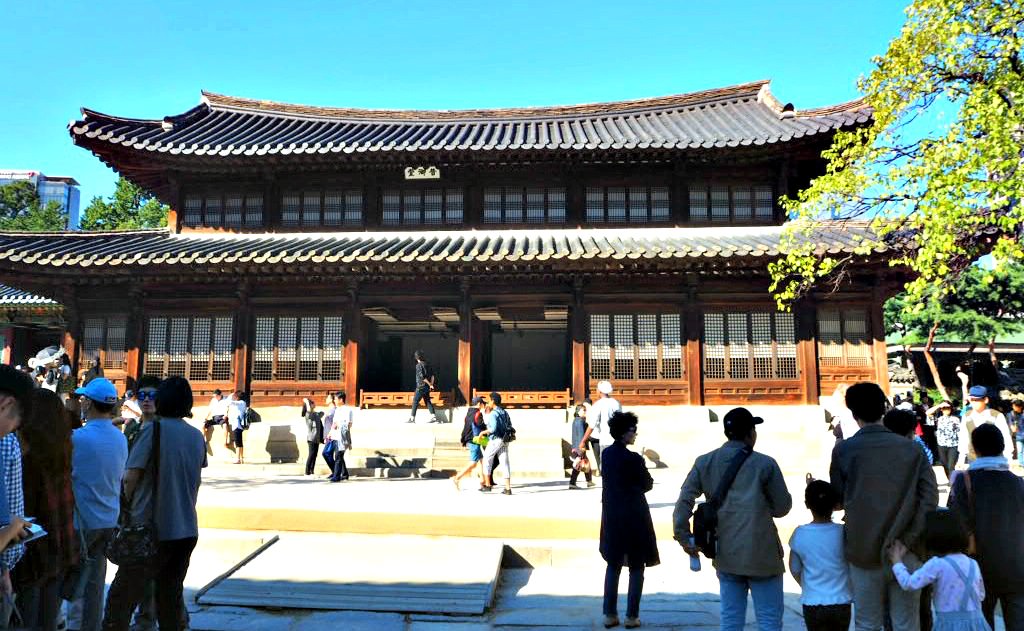 Hamnyeongjeon Hall
Hamnyeongjeon HallHamnyeongjeon is built with a terraced rear garden where the king received his officials and foreign visitors. The building got destroyed by fire in 1904 but was restored sometime in that same year.
Jeonggwanheon (정관헌)
This particular building looks quite unique and different compared with most structures inside the palace, that's precisely because it is built with a colorful design, Romanesque style, by a Russian architect named A. I. Sabatin.
The building is being surrounded by outer rows of covered colonnades, and the wooden verandas were built facing the east, south, and west. The top of the columns is decorated with traditional Korean symbols such as the blue and golden-colored dragons, flower bases, and bats.
Foreign delegates and envoys used to spend their time and hold banquets in this building. Even King Gojong is known to have enjoyed his coffee with the presence of foreign visitors.
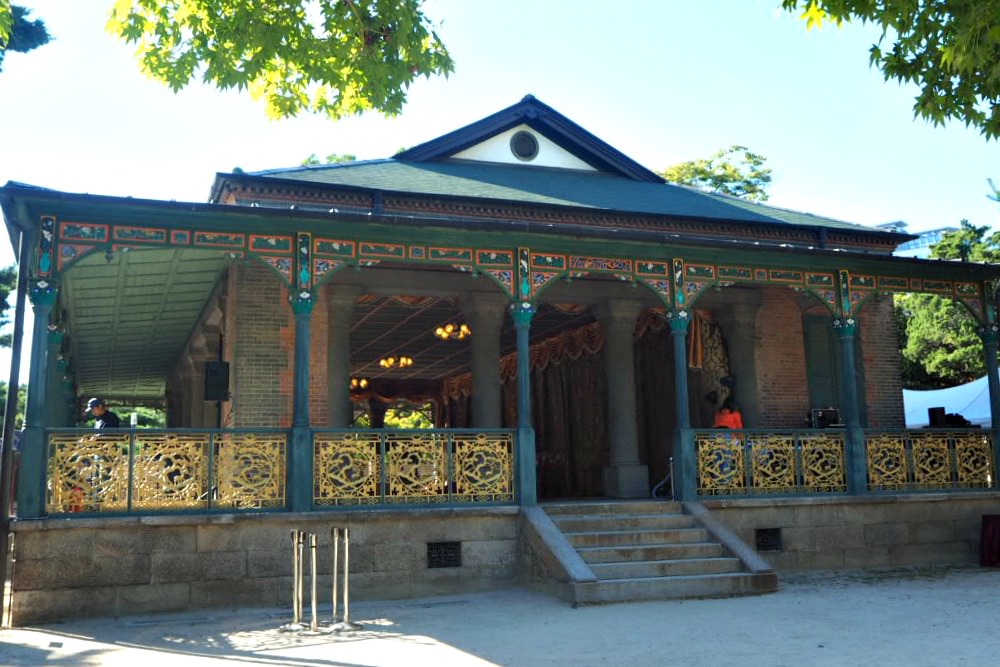 Western-style Junggwanjeon Hall
Western-style Junggwanjeon HallJeonggwanheon
Junghwajeon Hall
Junghwajeon Hall is a beautifully-built structure. It looks very stately and reveals its long history. Junghwajeon Hall is open to the public and offers guided tours so people can learn more about its fascinating story. It’s an amazing place to visit for anyone who wishes to get a sense of South Korean culture.
Jeukjodang Building
Jeukjodang is the name given to this structure by the royals Gwanghaegun and In-Jo. The two royals gave that name during their ascension to the throne.
The nameplate you can see at Jeukjodang Building was hand-written by King Gojong himself, who ruled the Joseon Kingdom in 1863-1907 as the 26th king.
Seokjojeon Hall
Seokjojeon Hall is another building with Western-style designed structure. A British business person was building this structure when, in 1905, the property rights of Korea were transferred to Japan at that time.
Seokjojeon was finally completed in 1910, as you can see today. When King Gojong died, the building was turned into a Japanese art gallery that was open to the public.
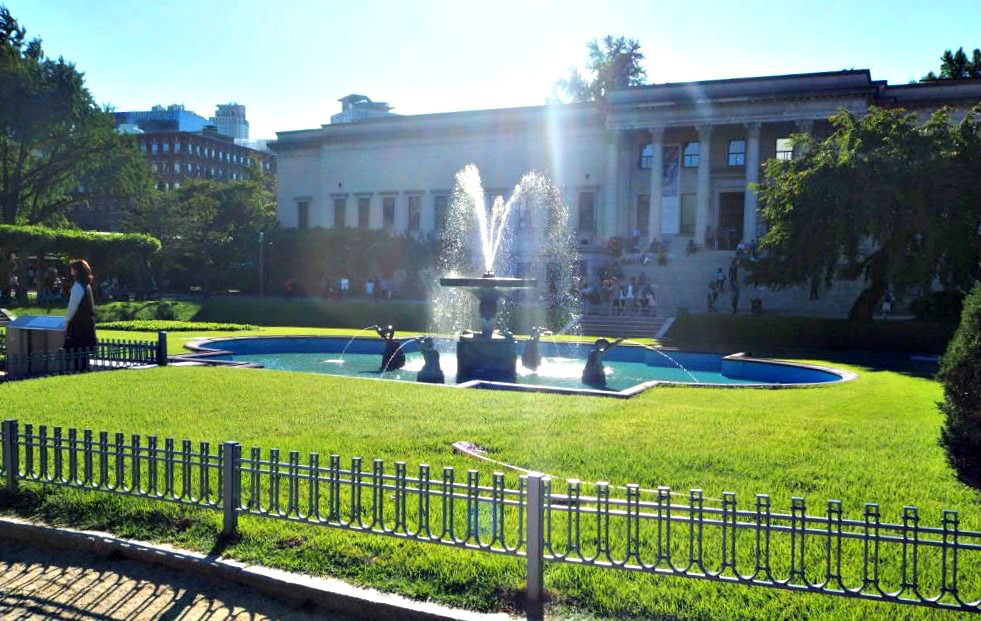 Seokjojeon Hall is turned into a museum and has been displaying art works up to the present
Seokjojeon Hall is turned into a museum and has been displaying art works up to the presentChanging of Guards
As done in the past, Deokgugung Palace is still being guarded ceremoniously by palace guards wearing the traditional Korean military uniform.
Changing of guards during the day is an exciting sight you can witness. Usually, I witness this spectacle after lunch as I pass the place during our quick stroll while still full!
More Sights nearby
Opposite of Deoksugung is a unique place. I say it is unique because you can, obviously, both the old and the new City Hall buildings. Of course, only the new own functions as the government's office while the old one turned into a metropolitan library. You will enjoy the vast and spacious plaza of the city hall with green grass during summertime.
Inside the new and modern style Seoul City Hall building, you can find various cultural events and exhibitions. Paintings, art pieces, wedding venues, coffee shops, meeting areas, the internet, etc. are available inside the building.
Then, coming out from Deoksugung Palace and turning left, a road will lead you to the modern Seoul Museum of Arts. The area where this museum is located could be quite crowded before and after lunchtime because most office workers, among others, would take a stroll after their sumptuous meal with their right (or left) hands holding drinks (coffee latte or americano?).
Further up the road, Jeong-dong Road, you will find the famous Jeongdong Theater where you can watch traditional Korean performances for a fee. Also, in the underground of City Hall station, you can find an array of shopping arcades.
Useful Visitation Information:
Address: 57, Namdaemun-ro 1-gil, Jung-gu, Seoul
Phone: +82-2-771-9951 (English, Korean, Japanese, Chinese speakers)
Website: www.deoksugung.go.kr (Korean & English)
Tour Guide in English:
10:30am on weekdays and 1.40 on weekends.
Operation Hours (closed on Mondays):
09:00am to 21:00pm
Getting to Deoksugung Palace
The palace is easily accessed via Seoul Subway (metro), bus, taxi, and private vehicles, as it is at the heart of Seoul.
By subway, you may take Subway Line 1 or 2 and come out from Exits 1, 2, or 3 at City Hall Station.
By bus, you should get off in front of Seoul City Hall Deoksu Palace Bus Stop, which is located just by the walls of the palace. You can pick any of the following buses...
Green Bus No. 1711, 7016, 7022,
Blue Bus No. 103, 150, 401, 402, 406, 604, N16
Airport Bus No. 6005
Jongno Bus No. 09 or 11
As a hint, if you are already in Gwanghwamun Square, Gyeongbokgung Palace, Insadong, Jongno, Seoul City Hall, Cheonggyecheon Stream, or Sodaemun areas, know that you are just a few hundreds of meters or a kilometer away from Deoksugung Palace!
I'm just saying that you don't need to ride any vehicle. A short and leisurely walk will bring you to this site quickly!
Accommodations Beside the Palace
Travelers will find it more comforting to learn that they can stay very close to the palace and explore other sights from there.
Located at the heart of Seoul, Deoksugung Palace is not only a famous travelers' destination but also where they stay overnight or days during their business or leisure visit.
There are famous and classic hotels and proven with their excellent service. You can stay at any accommodation from a budget one to a 5-star ranked hotel nearby Deoksugung.
Koreana Hotel
President Hotel
The Plaza Seoul
Westin Chosun Seoul
Lotte Hotel Seoul
And more choices at this credible online hotel provider.
There you go, and I hope you enjoy your exploration fully inside the palace.
- Home
- Seoul Attractions Best
- Deoksugung Palace
Get Exciting Activities
Book one of our exciting activities today to experience the thrill of a lifetime! Take advantage of this opportunity and secure your spot in advance.
Hotel Map Guide
Find your affordable, accessible, and comfortable hotel in Seoul at Agoda.Com. See the hotel map below...
Hotel Booking Guide
Find affordable and amazing hotels on Agoda.com using the search box below. Book now to enjoy great discounts and save!
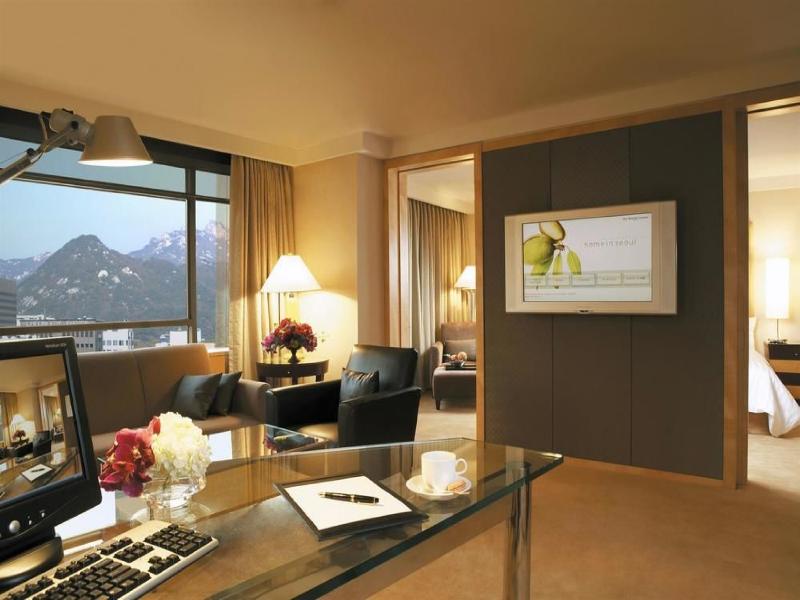
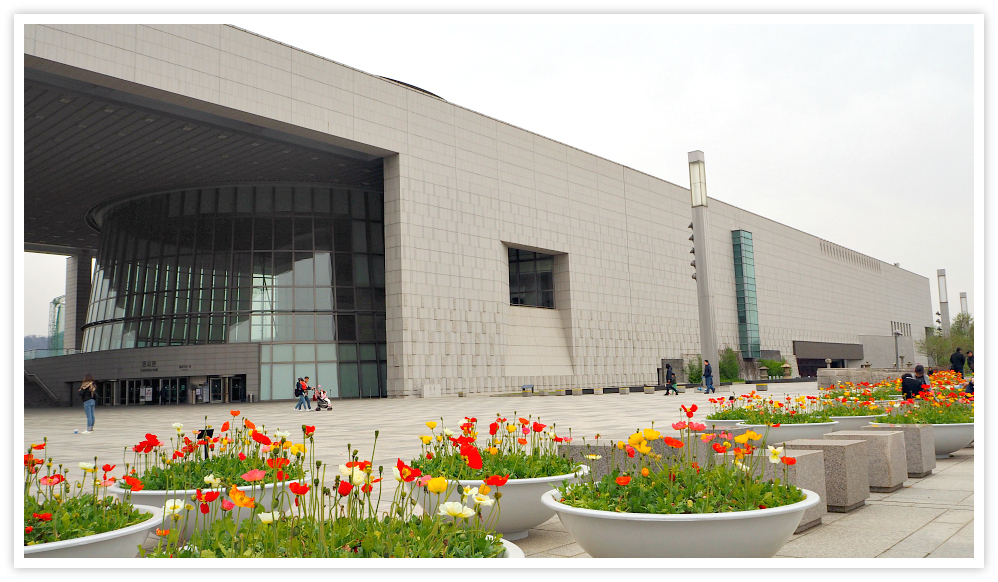
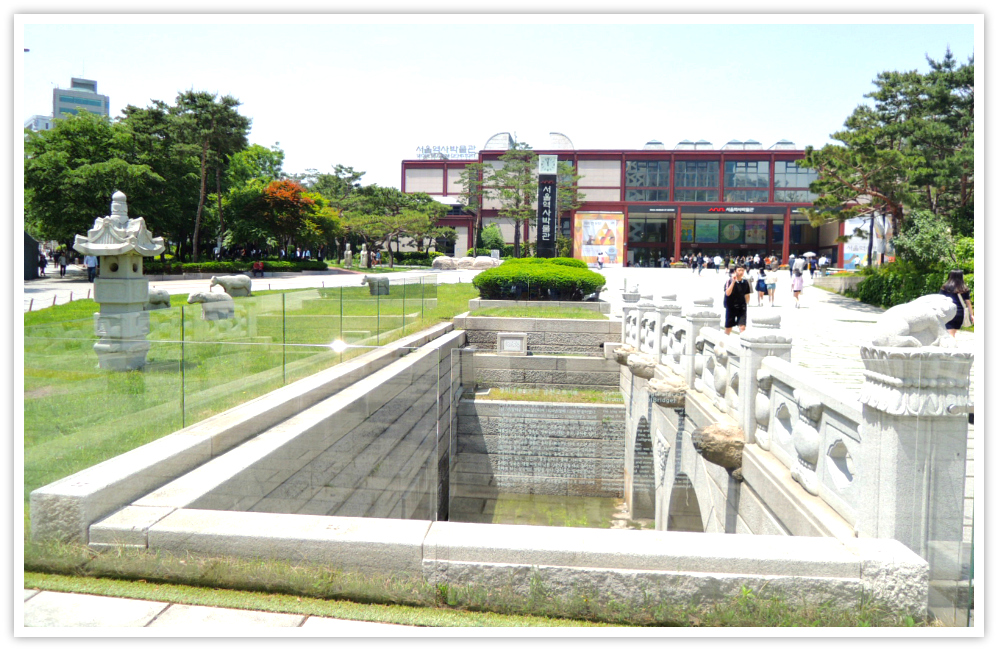
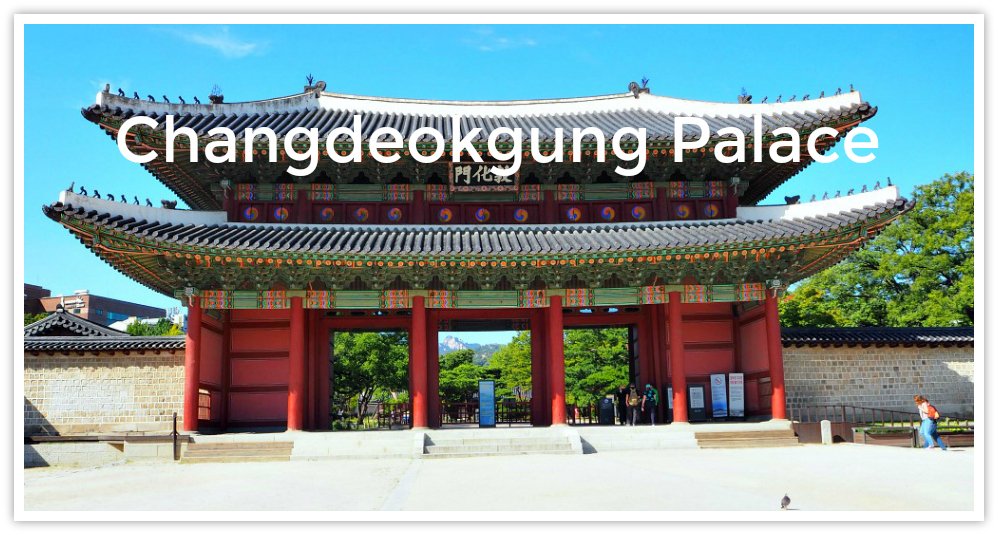




New! Comments
What do you think about this page? Leave me a comment in the box below.